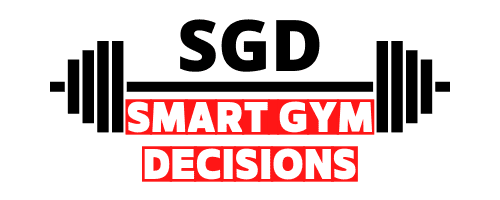
Pull-ups are one of the most popular exercises in fitness, and for good reason. Not only do they give you a great upper body workout, but they also help to develop strength and build muscle and mass quickly. But the big question on everyone’s minds is: How many pull-ups should I be able to do?
Understanding Pull-Ups
Pull-Ups are a compound exercise that involve multiple major muscle groups and joints, so proper form is essential. Knowing and using the different grip variations can help you focus on specific muscles and maximize your results. Additionally, good technique helps you prevent injuries while pushing your entire body to its limits.
So if you want to get the best out of pull-ups, then it’s important to understand how many pull-ups you should be able to do as well as how to properly execute them with correct form and technique.
A good rule of thumb is to target the 8-12 rep range. When I first started training I couldn’t even do one single pull-up and eventually, I got to do one rep max pull-up with 50 kg added to my belt.
To understand pull-ups mechanics I suggest that you implement as a warm-up exercise, scapula pull-ups. Don’t neglect this exercise, because this exercise will protect you in the long term.
You’re probably asking yourself, what do I mean with protecting yourself?
Well I mean that there are common issues that occur after working out for some time, and that’s normally related with poor technique. This will lead to injury, so an exercise like scapular pull-ups will help a lot with your technique.
Pull-Up Form
- Assume a dead hang position by fully extending your arms, relaxing your shoulder blades, and hanging straight down with your hands slightly wider than shoulder-width apart.
- Make sure to retract and depress your shoulder blades (pull them down and back) to activate your scapula. This will enable you to use your lats and arms to pull yourself up.
- To do a pull-up properly, focus on using your back muscles (specifically your lats) to pull your body up in a straight line.
- To properly perform a pull-up, make sure to maintain an upright chest and pull your shoulder blades back.
- Bring your chin over the bar and then lower yourself down until your arms are completely straight. Repeat this movement.
Avoid cheating by kipping or swinging, unless you’re doing Crossfit. It’s better to do 5 strict, controlled pull-ups than 10 sloppy ones on a wall mounted pull-up bar. Make sure to use a full range of motion and avoid doing half reps. Remember, quality over quantity.
Factors Affecting Pull-Up Performance
Apart from the technique, your genetics, muscle mass, body weight and body composition can also play a role in your average pull-ups performance. Strength training and endurance training will give you an edge when it comes to doing a higher number of pull-ups.
If you are familiar with exercising and have been for a while, chances are that you’ll be able to do more pull-ups than those who haven’t had as much experience. Like I mentioned earlier, when I started working out I wasn’t able to do pull-ups, because I’ve never done pull-ups before, so my body wasn’t familiar with the pulling motion, however because I was swimmer, it didn’t take long until I could do my first pull-ups.
Pull-Up Standards and Progressions
Now, let’s talk about what pull-up standards every fitness level should strive for.
- For beginners, it is recommended to aim for 3 sets of 5-10 pull-ups. This will help increase strength and endurance while familiarizing yourself with the movement pattern. At first you’ll be thinking that you’re a beginner that can’t do pull-ups, so how is 10 pull-ups a beginner goal? 10 pull-ups is a great goal which is achievable, with consistency you’ll get it in 2 months, if you have a background in sports.
- For intermediate levels, we need a belt to add extra weight. If you can do 3 sets of 10 reps, extra weight is mandatory so you can keep progressing. Now we’ll focus on rep maxes, those maxes are a set of 5 reps with 20 kg.
- Lastly, for advanced levels, you know you are advanced when you reach 10 reps with 20 kg. As you get stronger and more experienced, strive to reach higher numbers by increasing the the number of pull ups and reps in each set or even adding extra sets, reps, weight into your routine!
By setting goals and consistently pushing your upper body with weight and resistance training, you’ll be able to improve your pull-up performance over time.
Pull-Ups Benefits
- The pull-up is a great compound exercise to strengthen and build your back muscles. This includes the latissimus dorsi, trapezius, erector spinae, and infraspinatus. Both men and women can benefit from a strong, wide back or a defined, beautiful, v-shaped back.
- Performing pull ups and up chin ups, can not only strengthen your biceps but also your forearms and shoulders. Pull-ups and chin-ups are considered to be some of the best exercises for back and biceps.
- Pull ups can help you lose weight and burn a lot of calories by elevating your heart rate, which boosts your metabolism and helps you burn fat, because this is a very demanding exercise.
- Compared to squats, deadlifts, bench press, and military press, pull ups are less harsh on the joints. Despite consecutive pull ups being low-impact, they offer the same benefits as these major lifts, making them a high-reward, low-risk exercise.
Training Strategies for Increasing Pull-Up Reps
In addition to improving your reps and total numbers, it’s important to also take time for proper rest and recovery. This means taking breaks in between sets and getting enough sleep each night.
Additionally, incorporating other pull-up bar exercises or other accessory exercises such as rows, lat pull-downs, planks, biceps curls, or tricep push-downs can help strengthen the muscles involved in performing pull-ups. These exercises will also help build endurance so you can get even more out of each set during your pull-up workouts!
Think about it this way: if you have one main goal of improving your pull-up game, then your training program should be planned around maximizing this goal. This means that you should focus the accessory work in exercises like the bent-over row, or other exercises that improve your grip strength.
Although many pull up exercises involve a vertical pulling motion overhand grip, the specific variation you choose will affect which muscles are activated more and the intensity of muscle contraction. For instance, a wide grip pull up emphasizes the lats, whereas the so called a close grip pull up involves more of same movement in the biceps.
Beyond Pull-Up Numbers: Other Indicators of Upper Body Strength
Pull-ups are a great measure of upper body strength, but there are other indicators as well.
Push-ups and dips assess your pushing power. Rows evaluate your pulling power. Endurance can be gleaned from how many as many pull ups, and reps you can perform in a single set.
Other exercises such as hanging leg raises, mountain climbers, burpees, and elevated push-ups also provide insight into your overall fitness level.
The bottom line is that when it comes to assessing upper body strength, pull-ups are just one piece of the whole workout. To get an accurate picture of where you stand (and what areas need improvement) it’s important to incorporate various exercises and movements into your routine so you can continually challenge your upper body, and achieve your goals.
After all, that’s the whole point of fitness: to be able to do more than just pull-ups!
Conclusion
So, how many pull ups should i be able to do?
The answer is: it depends.
The most important thing to focus on as you progress in pull up performance isn’t necessarily meeting any specific numbers – instead, it’s about improving your overall health and making sure to challenge yourself each day while also taking care of your body. With a little practice, consistency, and dedication, you can reach your goals! So set realistic goals for yourself, stay motivated by tracking your progress over time and don’t forget to include other exercises into the mix for balance.
How Many Pull-Ups Should I Be Able to Do FAQS
Q: How Many Pull Ups Should I Be Able to Do?
A: The answer to this question really depends on body weight of the individual and their fitness level.
Q: What If I Can’t Do Any Pull Ups?
A: That’s perfectly okay! You don’t have to be able to do any pull-ups right away – the key is to focus on improving your strength and form since the first pull-up.
You can also use an assisted pull-up machine where you set a weight that helps support your body weight behind you while you perform the exercise.
Q: What’s The Best Way To Improve My Pull Up Performance?
A: There are a few key strategies that are important for improving your pull up performance, such as focusing on proper form starting position and engaging your core during the exercise.
Q: Besides pull-ups which exercises should I do to improve my pull-ups?
A: Include exercises that target the muscle groups or muscles used during a pull up such as your back, core, and arms. Try incorporating other bodyweight exercises like bent-over rows, chin ups/pulldowns, tricep dips/push-ups or planks. You should also focus on stretching and mobility exercises to help you increase your range of motion and strengthen your connective tissues for better pull up performance.
Q: Can I do pull-ups everyday?
A: Yes, but it’s important to maintain a balance. If you’re just starting out with pull-ups or are looking to increase the average number of pull ups and reps you can do in one set, then a 1-day per week routine should be enough for progress, but I for optimal progression do two sessions.






